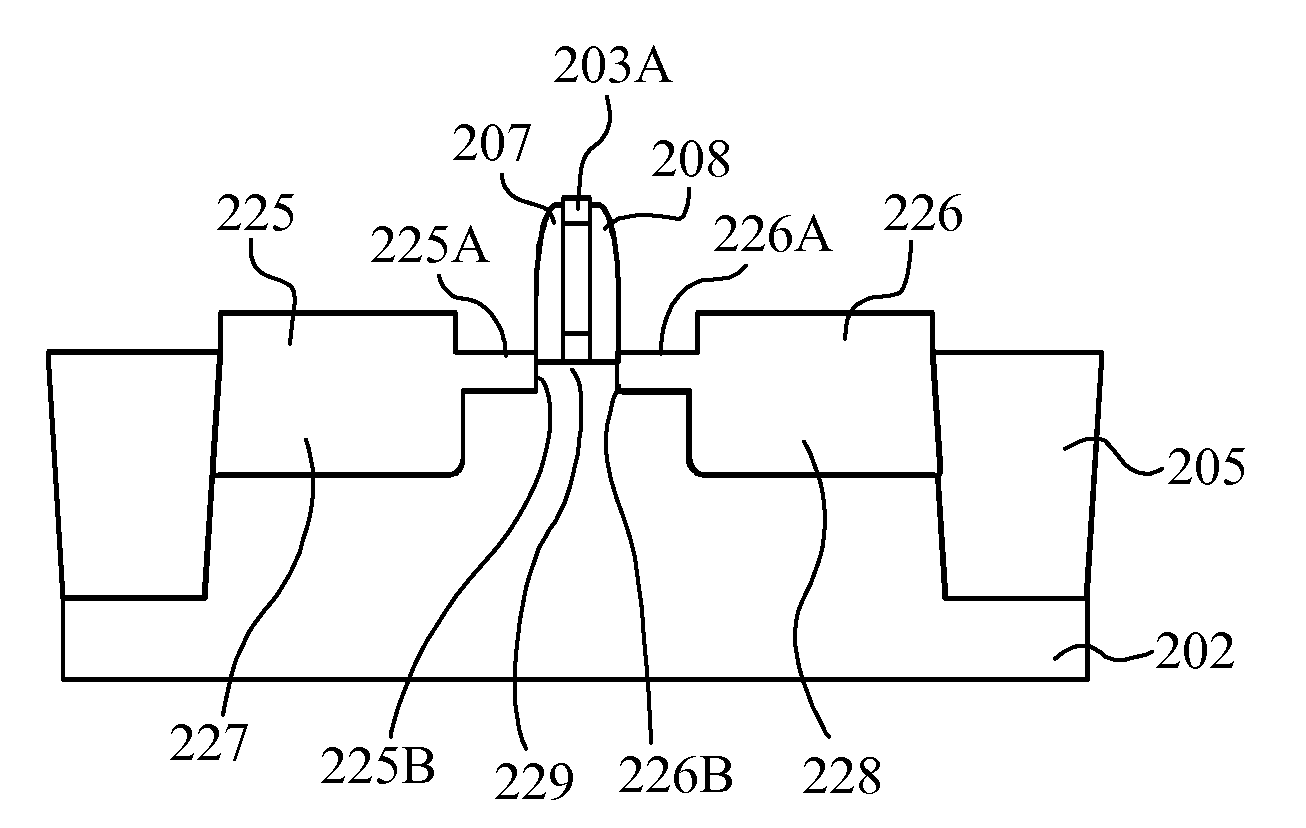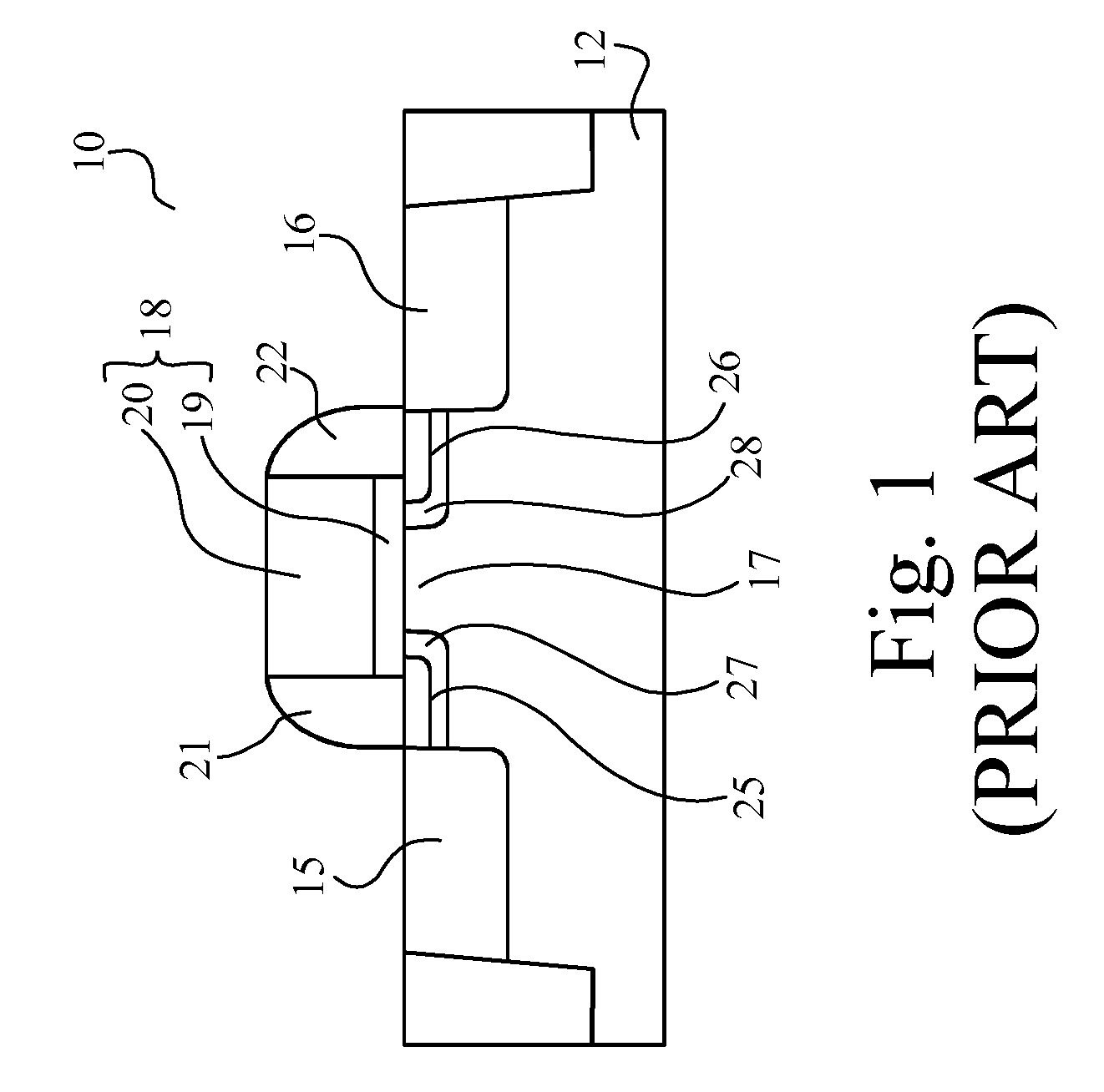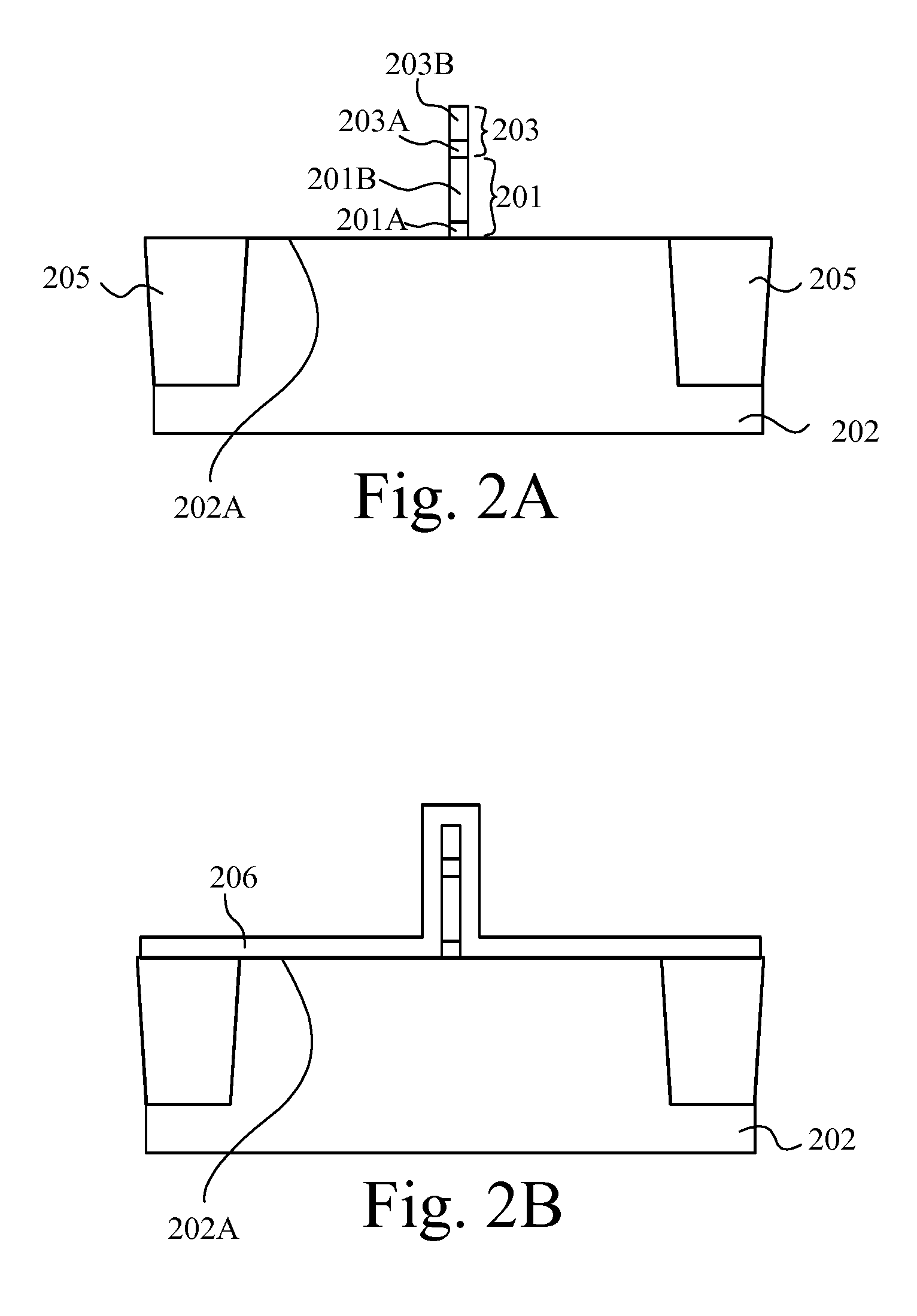Strained channel transistor and method of fabrication thereof
a technology of straining channel transistor and fabrication method, which is applied in the direction of basic electric elements, semiconductor devices, electrical equipment, etc., can solve the problems of difficult control, difficult to achieve in practice, and breakdown conditions, so as to improve short channel behaviour, improve the stress along the channel, and improve the strain in the channel.
- Summary
- Abstract
- Description
- Claims
- Application Information
AI Technical Summary
Benefits of technology
Problems solved by technology
Method used
Image
Examples
first embodiment
[0038]FIGS. 2A to 2L illustrate structures formed during fabrication of a strained channel transistor structure 200 (FIG. 2L) in accordance with the present invention. The final transistor structure 200 is illustrated in FIG. 2L.
[0039]FIG. 2A shows a structure having a gate structure 201 formed on a substrate 202 of a first semiconductor material which is silicon. Whilst the first semiconductor material is described here as silicon it will be understood that other materials such as germanium or GaAs or others could be used. The gate structure 201 has a gate insulating layer 201A formed on the silicon substrate 202 and a gate electrode 201B formed above the gate insulator layer 201A.
[0040]The gate insulator layer 201A is silicon oxide but it will be appreciated that other materials could be used such as silicon nitride, aluminium oxide, hafnium oxide or others alone or in combination, for example a combination of layers of silicon oxide and silicon nitride. Silicon oxide may be grown...
second embodiment
[0084]FIGS. 3A to 3H illustrate structures formed during fabrication of a strained channel transistor structure 300 in accordance with the present invention. The final transistor structure 300 is illustrated in FIG. 3H.
[0085]FIG. 3A shows a device structure having a gate structure 301 formed on a substrate 302 of a first semiconductor material which is silicon. Whilst the first semiconductor material is described here as silicon it will be understood that other materials such as germanium or GaAs or others could be used. The gate structure 301 has a gate insulating layer 301A formed on the silicon substrate 302 and a gate electrode 301B formed above the gate insulator layer 301A.
[0086]The gate insulator layer 301A is silicon oxide but it will be appreciated that other materials could be used such as silicon nitride, aluminium oxide, hafnium oxide or others alone or in combination, for example a combination of layers of silicon oxide and silicon nitride. Silicon oxide may be grown by...
PUM
 Login to View More
Login to View More Abstract
Description
Claims
Application Information
 Login to View More
Login to View More - R&D
- Intellectual Property
- Life Sciences
- Materials
- Tech Scout
- Unparalleled Data Quality
- Higher Quality Content
- 60% Fewer Hallucinations
Browse by: Latest US Patents, China's latest patents, Technical Efficacy Thesaurus, Application Domain, Technology Topic, Popular Technical Reports.
© 2025 PatSnap. All rights reserved.Legal|Privacy policy|Modern Slavery Act Transparency Statement|Sitemap|About US| Contact US: help@patsnap.com



